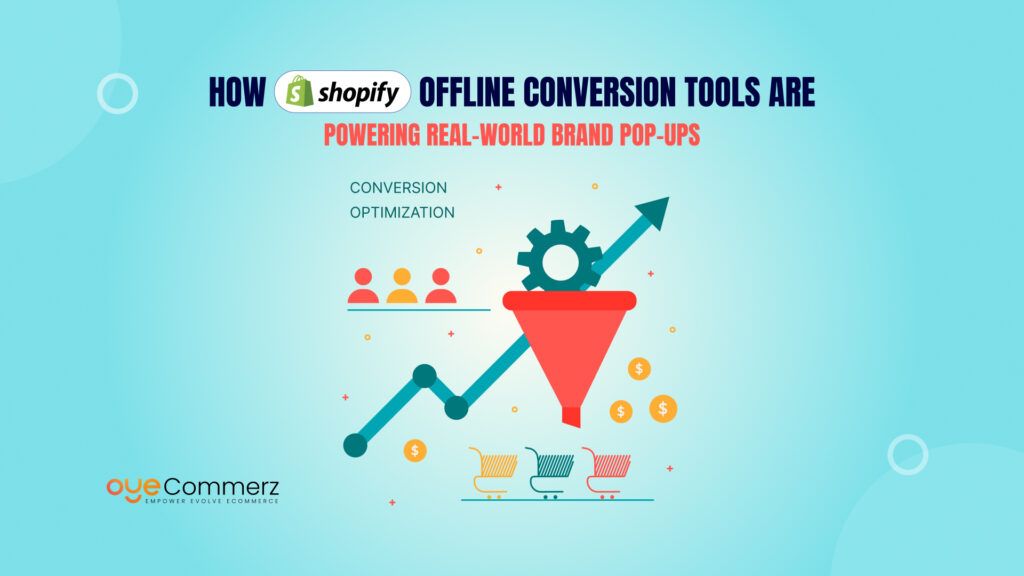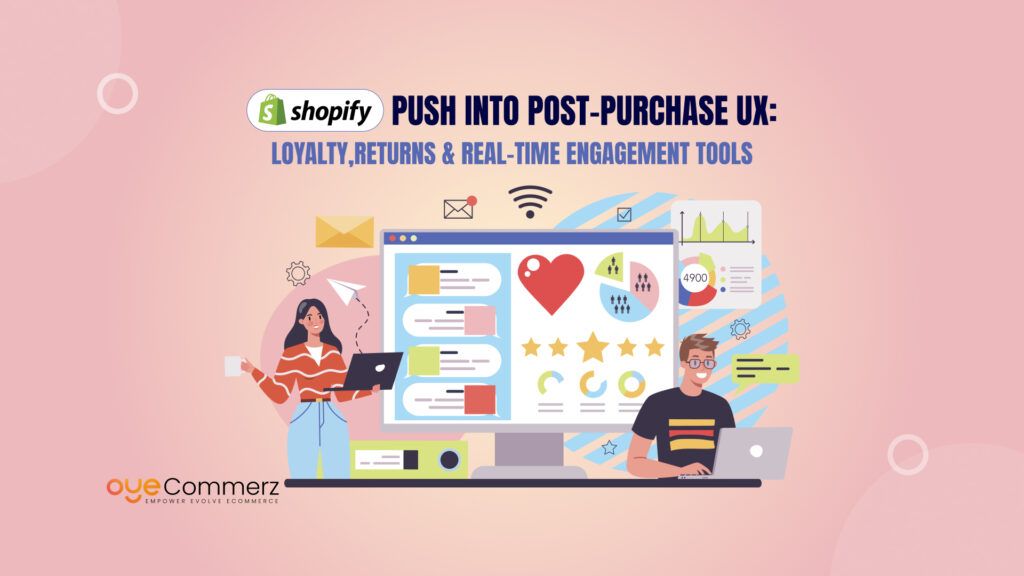Thinking about switching from Magento to Shopify? You’re not alone. Many businesses are making the move to Shopify because it’s easier to use, faster to manage, and offers a more reliable hosted experience. While Magento is powerful, it often requires more technical know-how, higher development costs, and ongoing server maintenance making it challenging for growing businesses to scale smoothly.
But migrating from one platform to another isn’t just a simple copy-paste job. Without proper planning, you risk losing important data, breaking your SEO, or launching a store that’s not fully functional.
That’s why we’ve created this complete Magento to Shopify Migration Checklist to help you move your store without the stress. This guide will give you clarity on every step, help you avoid costly mistakes, and ensure your SEO and customer data remain intact during the process.
Let’s make your move to Shopify clean, efficient, and future-ready.
Table of Contents
ToggleWhy Migrate from Magento to Shopify?
While Magento is a powerful platform, it often comes with high costs and technical challenges that many businesses outgrow over time. Here’s why more store owners are choosing Shopify:
High Maintenance Costs
Running a Magento store requires regular updates, server management, and often a developer to handle changes. These ongoing expenses can quickly add up, especially for small and medium-sized businesses.
Technical Complexity
Magento is best suited for users with technical knowledge or development teams. If you’re not comfortable with coding or managing hosting environments, even small changes can become time-consuming and costly.
Better Scalability and User-Friendliness
Shopify is built for ease of use. Its simple admin interface, drag-and-drop theme editor, and clear product management tools make it ideal for fast-growing brands that need to focus on sales—not on troubleshooting.
Built-in Features and Rich App Ecosystem
Shopify offers a hosted, all-in-one solution with secure payment gateways, mobile optimization, SEO tools, and a huge app store. This means you can enhance your store without custom development or complex third-party integrations.
Pre-Migration Planning
Before you start the migration process, careful planning is essential to avoid data loss, downtime, or SEO issues. Here are the key steps to take before making the move from Magento to Shopify:
Define Your Business Goals
Start by understanding what you want to achieve with the migration.
Are you aiming for a complete design overhaul?
Is your focus on improving site speed, SEO performance, or boosting conversion rates?
Clarifying your goals helps guide theme selection, app integrations, and overall site setup on Shopify.
Take a Full Backup of Your Magento Store
Creating a complete backup of your Magento store is critical before any migration.
Make sure to back up:
Your entire system (System Backup)
The database
Media files like product images and banners
These backups act as a safety net in case anything goes wrong during migration.
Audit Your Current Store
Evaluate what your current Magento store contains.
Review your product listings, content, categories, and customer data
Identify outdated, missing, or duplicate information
Cleaning up your data now will make your new Shopify store more streamlined and easier to manage.
Inventory the Data You Plan to Migrate
List everything you need to move over to Shopify. This typically includes:
Product details (with variants and images)
Customer profiles and contact details
Order history and transaction records
Blog posts and CMS pages like About Us or FAQs
Having this list ready helps avoid missing important data during migration.
Choose the Right Shopify Plan
Shopify offers several pricing plans based on your business size and needs.
Basic Shopify: Ideal for new or small businesses
Shopify: Suitable for growing brands
Advanced Shopify: Great for high-volume stores needing advanced reporting
Pick a plan that aligns with your store size, sales volume, and required features.
Preparing Your Shopify Store
Once your Magento data is backed up and your goals are set, the next step is to prepare your Shopify store. This stage ensures you have the foundation ready to receive the migrated data and begin building your new storefront.
Create a Shopify Account
Start by signing up for a Shopify account.
Choose the right plan based on your business needs
Set up your store’s name, contact details, and business information
Configure your domain you can purchase a new one through Shopify or connect an existing domain
Set your store’s default currency, shipping locations, and tax settings
Getting these basics in place ensures your store is fully functional from day one.
Select & Customize a Shopify Theme
Choose a theme that represents your brand and works well on mobile devices.
Shopify’s theme store has both free and paid options
Look for a theme that supports Online Store 2.0 features for better flexibility
Customize the theme by adding your logo, brand colors, fonts, and layout preferences
This is your opportunity to refresh your store’s look and deliver a better customer experience.
Install Essential Shopify Apps
Apps enhance your store’s functionality beyond the default setup.
Here are some categories to consider:
SEO – Improve meta tags, URLs, and site structure
Marketing – Email campaigns, pop-ups, upsell/cross-sell tools
Inventory – Real-time stock management and syncing tools
Product Reviews – Build customer trust with authentic feedback
Analytics & Reporting – Gain insights into store performance
Install only the apps you truly need to keep your store lightweight and fast.
Data Migration Steps
Migrating your store data accurately is one of the most critical parts of the Magento to Shopify transition. It ensures your customers, products, and orders are seamlessly transferred without data loss or inconsistencies.
Choose a Migration Method
There are three main ways to move your data from Magento to Shopify:
Manual Migration
Ideal for smaller stores with limited data. You export data from Magento in CSV format and import it into Shopify. It requires close attention to formatting and structure.Use of Import Apps
Tools like Cart2Cart or LitExtension automate much of the process. They support bulk data transfers and reduce manual work.Hire an Expert Shopify Migration Agency
Agencies like Oyecommerz offer complete migration services, including data transfer, SEO preservation, theme setup, and post-migration support. Ideal for busy merchants or complex migrations.
Export Data from Magento
Access the Magento Admin Panel and export important data such as:
Products and variants
Customers and their profiles
Categories and collections
Orders and order history
Product images and descriptions
You can do this using Magento’s native export tools under System > Data Transfer > Export.
Import Data into Shopify
Once exported, import your data into Shopify:
Use the CSV import feature available in Shopify Admin
Or use the migration tool/app you’ve chosen
Carefully map your data fields to match Shopify’s structure (for example, ensure product SKUs, descriptions, and prices align correctly)
Proper data mapping ensures consistency and avoids duplication or formatting errors.
Review & Clean Up Imported Data
After the import is complete:
Check for missing fields or broken data
Verify all product listings, customer data, and order histories are correct
Correct any metadata, pricing discrepancies, or inventory mismatches
Make sure SEO fields like product URLs, titles, and meta descriptions are intact or adjusted accordingly
This step helps you start strong on Shopify without disruptions to your customer experience or SEO rankings.
Designing Your Shopify Store
Selecting a Shopify Theme
Choose a Shopify theme that reflects your brand. Shopify offers a variety of free and premium themes, so take your time to find one that matches your aesthetic and functional requirements.
Customizing Your Theme
Customize your theme to align with your brand’s identity. This includes adding your logo, choosing a colour scheme, and configuring the layout of your store.
Mobile Responsiveness
Ensure your theme is mobile-responsive. With a growing number of shoppers using mobile devices, it’s essential that your store looks great and functions well on smartphones and tablets.
Set Up Shopify Store Essentials
Once your data is successfully migrated, it’s time to configure the core settings of your new Shopify store to ensure everything runs smoothly and professionally.
Domain Setup
Reconnect Your Existing Domain
If you already own a domain (like yourstore.com), you can easily connect it to Shopify via your admin panel. Update your DNS settings to point to Shopify’s servers.Buy a New Domain (If Needed)
You can purchase a new domain directly through Shopify or use a domain registrar like GoDaddy or Namecheap.
A custom domain builds trust and helps you maintain SEO value from your old store.
Shipping & Tax Configuration
Set Shipping Zones and Rates
Define the regions you ship to and set accurate shipping costs. Use flat rates, weight-based rates, or real-time carrier rates depending on your business needs.Configure Tax Settings
Shopify automatically calculates taxes based on your location, but you should double-check the rules for your country or state. Make sure tax is applied correctly to products and shipping.
This ensures compliance and avoids surprise charges for your customers.
Payment Gateways
Enable Shopify Payments
This is the easiest way to accept credit card payments. It’s built into Shopify and has competitive rates.Set Up Third-Party Payment Options
You can also integrate providers like PayPal, Stripe, Razorpay, or manual payment methods like bank transfers and COD (Cash on Delivery), depending on your location and audience.
Make sure payments are secure and user-friendly to reduce cart abandonment.
Create Legal & Info Pages
Add Key Informational Pages:
These pages build trust and provide clarity to your customers. Make sure you create:Privacy Policy
Terms and Conditions
Refund and Return Policy
Shipping Information
FAQs
Contact Us
You can generate some of these using Shopify’s built-in templates and customize them to reflect your policies.
Post-Migration Tasks
After moving everything to Shopify, it’s important to go through a few final steps to make sure your store is running smoothly and your SEO remains strong.
Test the Entire Store
Walk through your new Shopify site like a customer would.
Test the checkout process, site navigation, product filtering, and mobile responsiveness.
Check for missing images, incorrect links, or any design issues.
Make sure the user experience is clean, intuitive, and functional across devices.
Set Up 301 Redirects
Redirect your old Magento URLs to the new Shopify URLs using 301 redirects.
This ensures that visitors and search engines land on the correct pages.
Redirects are essential to avoid broken links and protect your existing SEO rankings.
Submit Updated Sitemap
Generate your new sitemap in Shopify (usually located at
yourstore.com/sitemap.xml).Submit it to Google Search Console and Bing Webmaster Tools.
This helps search engines discover your updated content faster and reindex your site properly.
Monitor Performance
Use Shopify Analytics to track sales, traffic, and customer behavior.
Integrate Google Analytics and Google Search Console to monitor performance, traffic drops, or indexing issues.
Stay informed and adjust strategies based on real data.
Invite Customers to Reactivate Accounts
Send an email campaign letting your customers know you’ve moved to Shopify.
Provide instructions or links for them to reactivate their accounts or set new passwords.
This helps retain loyal customers and encourages repeat purchases on your new platform.
Final Tips for a Smooth Transition
Don’t Rush the Launch Test Thoroughly
Take your time with testing before going live.
Run a series of checks on product pages, customer accounts, checkout functionality, and mobile responsiveness.
Testing ensures that you don’t miss any critical issues and guarantees a smooth experience for your customers.
Train Your Team on the Shopify Backend
Familiarize your team with the new Shopify backend.
Ensure they know how to manage orders, update inventory, handle customer inquiries, and access analytics.
Proper training will make the transition smoother and ensure your team can efficiently manage the store.
Keep SEO Best Practices in Mind During Design & Data Setup
Prioritize SEO during theme customization and data import.
Ensure that your metadata, URLs, alt tags, and internal linking are correctly set up.
Shopify’s SEO-friendly features, when used correctly, can significantly boost your visibility in search engines.
Observe Our Magento to Shopify Migration Checklist
Ready to take your enterprise e-commerce to the next level? Partner with OyeCommerz, the experts in Shopify Plus integration and optimization. Our dedicated team will help you harness the full power of Shopify Plus, ensuring seamless scalability, robust customization, and superior performance for your business. Don’t miss out on the opportunity to revolutionize your online store. Contact OyeCommerz today and start your journey towards unprecedented growth and success!
Contact to Migrate your Site to Shopify Now
Conclusion
Migrating from Magento to Shopify can seem like a daunting task, but with the right planning and tools, it can be a seamless transition that significantly benefits your business. The checklist provided helps ensure you don’t miss crucial steps, whether it’s preparing your Shopify store, migrating data, or setting up essential functions like shipping and payments.
By following the steps outlined, you’ll ensure a smooth migration process that leads to improved performance, better ease of management, and the scalability needed for future growth. Shopify’s user-friendly interface, combined with powerful built-in features and an extensive app ecosystem, allows you to focus on growing your business while enjoying the benefits of a reliable and efficient platform.
With this guide, you’re equipped with everything needed to migrate successfully, paving the way for a more efficient and profitable future.
FAQs
- What are the main benefits of migrating to Shopify?
Migrating to Shopify offers a user-friendly interface, a wide range of integrations, excellent customer support, and robust e-commerce features designed to help grow your business. - How long does the migration process typically take?The duration of the migration process varies depending on the size and complexity of your store. On average, it can take anywhere from a few days to a few weeks.
- What should I do if I encounter issues during migration?
If you encounter issues, utilize Shopify’s support resources, including their help center, community forums, and customer support team. Additionally, consider hiring a professional if the issues are complex. - Can I migrate my entire Magento store to Shopify?
Yes, you can migrate your entire Magento store to Shopify, including products, customer data, order history, and more. It’s important to follow a thorough migration process to ensure all data is correctly transferred. - Is it necessary to hire a professional for the migration?
While it’s possible to do the migration yourself, hiring a professional can ensure a smoother process and help avoid potential pitfalls. Professionals bring expertise and experience that can be invaluable during the migration.




